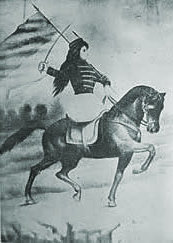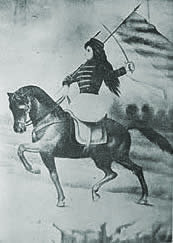
|
Women and Independence in Latin America An exploration of women's involvement in the Latin American Wars of Independence |

|

|
Women and Independence in Latin America An exploration of women's involvement in the Latin American Wars of Independence |

|
Gender:Female
Ethnic origen: White
Events:
| 1836 | - | Mexico | - | Unknown | - | She founded the Junta de Señoras? |
| 1841 | - | Mexico | - | Unknown | - | Frances Calderón de la Barca met her. |
Connections:
Frances Calderón de la Barca, described byBiography:
She founded and ran La Cuna, a Foundling Hospital, near the Hacienda of Santa Mónica? the former property of La Malinche. She was described as a "dowager" in 1841 by Frances Calderón de la Barca. She continues, children, “the offspring of abject poverty or guilt are left at the gate of this establishment, where they are received without any questions being asked; and from that moment, they are protected and cared for, by the best and noblest families in the country. The members of the society consist of the first persons in Mexico, male and female. The men furnish the money; the women give their time and attention.” The Dowager Marquesa de Vivanco is the president. The babies are cared for by Indian nurses who are paid four dollars a month as an inducement. Women members of the society are responsible for clothing a certain number of children. When the children are weaned they return to the Cuna, where they stay for life, looked after by nurses who are paid eight dollars a month. In practice few children remain in the Cuna; many are adopted by “respectable persons” who “bring them up either as favoured servants or their own children”. “The nurses are invariably bronze; the babies generally dark, though there was a sprinkling of fair English or German faces amongst them, with blue eyes and blonde hair.” (Calderón de la Barca, 441-442.)
Calderón de la Barca noted that some people were opposed to Cunas as they encouraged vice, but she felt the benefits outweighed the drawbacks. Even if some mothers did abandon their children, many were then hired as nurses and brought them up. “These orphans are thus rescued from the contamination of vice, from poverty, perhaps from the depths of depravity; perhaps their very lives are saved, and great sin prevented. Hundreds of innocent children are thus placed under the care of the first and best ladies in the country, and brought up to be worthy members of society.” (Calderón de la Barca, 455-456.)
She also founded the Junta de Señoras, a charitable organisation for foundling children founded by the former Marchioness of Vivanco. It was funded by men, but staffed and run by women. The women were responsible for the eventual adoption for their children; they held fundraising events and collected donations at Mexico City churches on religious holidays. Arrom links the organisation of charitable groups by women, as opposed to men, to Independence. It ran from 1836 to at least 1846. (Arrom, 43.)
References:
Arrom, Silvia Marina (1985) The women of Mexico City, 1790-1857
Calderón de la Barca, Frances (1982) Life in Mexico